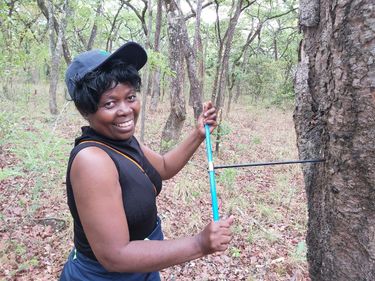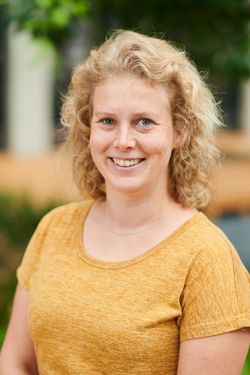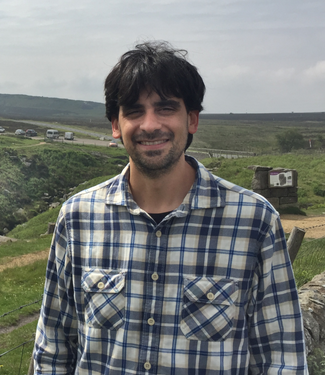
Katja Rinne-Garmston
Sessions in which Katja Rinne-Garmston participates
Tuesday 28 June, 2022
Intra-annual tree-ring δ13C record has the potential to provide deep insights into past plant performance and environmental conditions. With concomitant high temporal resolution δ13C analysis of non-structural carbohydrates, the processes behind observed low- and high-frequency δ13C changes in tree-ring record could be interpreted more reliably. This is essential for predicting forest response to impacts of climate change, such as more frequent and severe drought episodes.To better ...
Wednesday 29 June, 2022
Continuous cover forestry (CCF) has been promoted as an environmentally sustainable option for drained peatlands. The CCF management has also been challenged due to potential lower tree growth compared to traditional even-aged management, especially with suppressed trees that are released during thinning.Our objective was to quantify the time lag of stem growth response after CCF thinning with suppressed Norway spruce trees. We also tested if carbon uptake of these trees increases i...
Sessions in which Katja Rinne-Garmston attends
Tuesday 28 June, 2022
Africa is faced with a number of challenges including climate change and ecological disturbance due to various anthropogenic activities. These problems adversely affect the forests and also ecosystem services. My appreciation for the forests motivated me to pursure my undergraduate studies in Forestry. I first applied dendrochronology during my PhD research which focused on understanding the climate change vulnerability of the Zambezi teak forests in Zambia. However, lack of research facil...
Past forest mortality after disturbances creates one source of uncertainty that needs to be taken into account to reconstruct biomass dynamics. Additionally, using unitless normalized data from tree-ring records to calibrate stand productivity in vegetation models constitutes another source of uncertainty for model calibration. In this presentation I would assess these two sources of uncertainty and discuss the influence of calibration technique in model-data fusion. I combined data from p...
The Pliocene is often identified as an example of a past warmer world. Studies of sub-fossil wood from fossil forest localities in the Canadian Arctic have allowed us to explore the amplified effects of global climate change in the Arctic during the Pliocene and to provide important information on how arctic ecosystems respond to these changes. Here we report new annually resolved climate records developed from Meighen and Prince Patrick Islands, which span a time period from 6.2 Ma to 2.7...
Wednesday 29 June, 2022
Dendrochronology is considered one the most precise of all the scientific dating techniques. However, it requires long sequences of tree rings and a master record for both the species and region in question. At the University of Groningen, we have been pioneering a new approach to dating that combines the precision of dendrochronology with the versatility of radiocarbon dating. It relies on the detection of spikes in the annual radiocarbon record, thought to b...
Dendrochronology is a well-established science used to determine the date of wood from cultural heritage objects, and often, to infer the geographic origin of the wood withing certain regions. Dendrochronologists insists that this science provides a date and provenance for the wood, not the object. However, recent research shows that it may be possible to determine the production place of works of art based on the area supplying the wood, and on inferences about wood derived from individua...
Recent studies have shown that long-lived tropical trees are able to recover from senescence stages and maintain high rates of aboveground carbon and biomass accumulation throughout their life span. In this study, we present a tree-ring-based analysis to estimate the annual accumulation of aboveground biomass (AGB) and carbon (C-accumulation) of an Ocotea porosa tree over the last five centuries (1485–2016). The study site is located in southern Brazil, under a subtropical climate. AGB was...
Session reescheduled from June 28th to June 29th
This is a mandatory (!) .... and FREE (!!) cocktail & award ceremony (!!!)(in replacement of the Banquet formula)->->->->->->->->->->->->->->->->->->After a great summer day of scientific and urban discoveries in our beloved MTL, we wish to bring together all the AmeriDendro community in one place and congratulate the TRS awardees for their remarkable achievements! -Bonsinsegna award-Fr...
Thursday 30 June, 2022
How old are tropical trees? This fundamental question has long driven the curiosity of laymen and scientists. But only recently, a great number of studies conducted by many brave dendrochronologists resulted in a significant tree-ring-based knowledge that allows us to start accurately estimating tree ages across the globe. As science goes, not only knowing the longevity of tropical trees is essential to understanding forest dynamics and its role in biogeochemical cycles, but one must also ...
Dendrochronological archives in the tropics of the Americas have been under-studied for a long time. Some of the challenges include the Identification of tree-ring boundaries in certain tree species, absence of winter dormancy associated to low temperatures in most of the cases, and logistic difficulties of fieldwork in remote sites. However, part of the slow progress is also related to the fact that historically much less resources have been inv...
Polylepis tarapacana is the longest paleoclimatic tree-ring archive in the South American southern tropics. It grows up to 5200 m a.s.l. in the South American Altiplano, a semiarid-high elevation Andean Plateau. P. tarapacana ring-widths (RW) have provided centuries of past hydroclimate information, but the potential use of tree-ring stable isotopes for paleoclimatic or ecophysiological studies remained understudied for this species. Here, we developed a network of four RW, oxygen (δ18O) a...
In their book chapter in 2011 Gagen et al. (2011) highlighted the need for stable isotope dendroclimatology to move beyond studies that simply demonstrate ‘potential’. This symposium, more than a decade since this publication, will focus on dendrogeochemical studies that demonstrate that the field has moved beyond studies focused on ‘potential’. In particular, this session will strive to identify compelling new insights into unique aspect...
A gap of millennial tree-ring data suitable for dendroclimatology has long been evident in the North American boreal forest. In my talk, I will describe the adaptive approach we have developed to build and improve a data network for millennial dendroclimatology in the eastern Canadian taiga. Recurrence of stand replacing wildfires is the most important constrain to the elaboration of long tree ring chronologies, which can only be developed away from regions ...
The interpretation of stable isotopes in a dendroecological framework can provide powerful insights into how trees adjust physiologically in response to the environment. This symposium aims to bring together researchers who use stable isotopes in tree rings to address ecophysiological responses to environmental changes from intra-annual to multi-decadal resolution. We hope this symposium will enable fruitful discussions and new ideas a...
Hydrogen isotope ratios in tree ring cellulose (δ2HC) have been recognized as a potential proxy for plant-climate interactions, plant physiology, and carbon metabolism. This goes along with recent studies showing species-specific δ2HC differences that cannot be explained by climatic conditions. However, systematic investigations on the phylogenetic impact on 2H-fractionations in carbohydrates of woody plant species are missing.Here, we sampled leaves and twigs of 152 trees and ...
The ability of forests to continue absorbing atmospheric CO2, and hence mitigating climate change, depends on the extent to which their productivity is limited by nutrients, with nitrogen (N) being particularly important in temperate and boreal regions. Fertilisation experiments offer an opportunity to directly determine whether atmospheric N input can contribute to alleviating N limitation. However, the majority of the experiments have normally considered soil N applications, which do not...
The boreal forest located in high northern latitudes stores about a third of the world’s carbon and covers almost a quarter of the Earth’s land surface. This region is experiencing one of the fastest temperatures increases on the planet. Yet it is unclear how global warming affects carbon sequestration and storage in this biome. Here, we explore how white spruce (Picea glauca [Moench] Voss) growing in North America responded to climate change during the 20th century using tree-ring width a...




